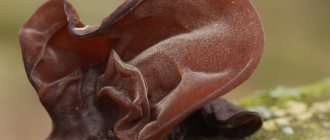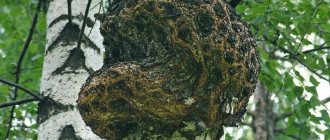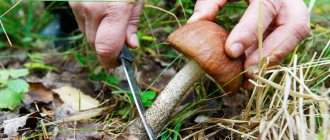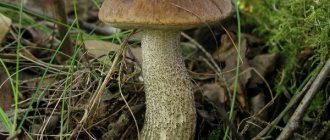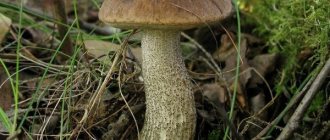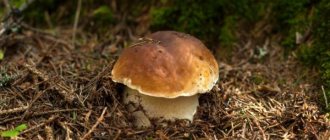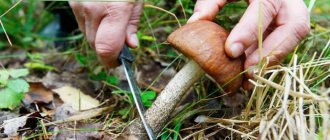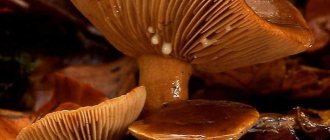The world of mushrooms is very diverse. There are a huge number of tubular species, but there are many more lamellar ones. It is very easy to determine which group a mushroom found in the forest belongs to, just look under the cap. Tubular fish always have a dense, wide sponge under their cap. The shape and color of the plates will always be different for each individual species.
Since among the representatives of agaric fungi there are both edible and extremely poisonous specimens, we will consider information about the representatives of this group in more detail.
What are the varieties of lamellar mushrooms?
The lamellar family has more than 3 thousand different species, and among them the best edible ones can be distinguished: milk mushrooms, green mushrooms, saffron milk caps, volushki, valui, rows, champignons, russula, honey mushrooms (Figure 1).
Note: All varieties of representatives of the lamellar group have thin plates under their caps that diverge from the edge of the flat cap to the stem. About a billion spores always mature on their surface. If these plates did not exist, then the spores would need an area several tens of times larger than the size of the cap.
There are indeed a lot of varieties of agaric mushrooms, and this group is usually divided into edible and conditionally edible. These include umbrellas, russula, mushrooms, champignons, milkweeds, valui, milk mushrooms, saffron milk caps, etc.
Figure 1. There are many varieties of agaric mushrooms
There are also poisonous lamellar species: fiberworms, entolomas, toadstools, fly agarics, talkers, lepiots, hebelomas, some types of cobwebs and others.
Characteristics and classification of tubular mushrooms
Tubular mushrooms are easy to distinguish from lamellar mushrooms: their hymenophore (the inner side of the caps) is a multitude of small tubes, collectively resembling a sponge. The shape of the caps is always convex, and the size depends on the specific species. They grow in dense forests, parks and other places where direct sunlight is minimal.
Structure of tubular mushrooms If these mushrooms are boiled, the flesh of the caps will absorb liquid, which should be taken into account during the cooking process. Also know that after cooking they turn dark (with the exception of boletus), and this is completely normal.
Characteristic features of the species
Until recently, lamellar plants were part of the agaricaceae family. However, after the classification of the genera, they were distributed into a separate group in accordance with the descriptions and in order.
A large number of species have annual fruiting bodies, which can be fleshy, but are also leathery. On the underside of the cap there are hymenophore outgrowths, which is characteristic of this group. The outgrowths of the hymenophore are represented by radially arranged plates of different thickness and width, which are carriers of the spore-bearing layer (Figure 2).
Figure 2. A characteristic feature is the presence of plates under the cap
There are many different species in the lamellar family, but we are only interested in the edible ones. The names of the most common edible species are known to many experienced mushroom pickers. For each species, the color of the plate can be different - brown, yellow, white, gray, greenish. However, there are some common characteristics, for example, a not very thick stem, a flat cap and plates under it.
Where they grow, in what forests and how to collect
Some types of mushrooms can only be found during certain periods. Lamellars often grow in coniferous, deciduous and mixed forests.
Popular views of the Moscow region
Lamellar mushrooms that can be found in the Moscow region are russula. They grow in coniferous, deciduous and mixed forests, as well as in swamps. They are distinguished by their fragility, so experienced mushroom pickers advise collecting them separately from other species. The color of the caps varies from green, pink or blue-yellow.
Edible agaric mushrooms
Lamellar species have very fragile flesh, which can break during cooking. Edible varieties are especially good when fried or pickled (Figure 4).
Note: Due to the fragile pulp, representatives of this family are most often not used for making soups, with the exception of honey mushrooms, which are more elastic and hold their shape well.
Among the edible representatives of the lamellar family, the following species deserve attention:
- Pink moist: not very attractive in appearance due to the mucus that covers the entire light brown cap with rare dark spots. However, appearance is deceiving and pink mokrukha is very tasty when fried and salted.
- Lemon oyster mushroom: you can do everything with this type in cooking, even adding it to soup. The only drawback is its growth, since it can only be found in the Far East. The hats are small in size (maximum 10 cm in diameter) and have a beautiful lemon shade. Under the cap you can see plates that go onto a long stem. The leg of the lemon oyster mushroom grows in the center, but can move as it matures. The pulp is white and very tender, smelling of flour. As it matures, the flesh may become rough to the touch.
- Blue russula: has a fleshy cap, under which there are white thick plates. The hat is blue-lilac in color with a dark central part. The blue russula has a white leg and is denser in the central part. The pulp is light, but very pleasant to the taste.
- Purple web spider: it is difficult to confuse it with others, since the purple color attracts attention to itself. However, the color should not be intimidating since it is edible. The mushroom stands on a high stalk, which is covered by a convex cap. Under the cap there are dark-colored plates.
- Forest champignon: this is probably the most delicious mushroom, which has very aromatic and light flesh. If you break the pulp of a forest champignon, it may turn a little brown. The cap is covered with scales and colored brown.
Figure 4. Unusual edible varieties of platelets
It is extremely important not to confuse edible mushrooms with poisonous specimens of the same genus. Information from the next section will help you distinguish edible species from false counterparts.
Tips for beginner mushroom pickers
Experienced mushroom pickers know how to distinguish a poisonous mushroom from an edible one. They advise first of all to pay attention to the insects around the mushroom. Their absence indicates that it contains toxins.
Important!
The main rule of a mushroom picker is: “If you’re not sure, don’t pick it.” It’s better to find a mushroom that a person will be confident in than to risk your own health. You should also pay attention to the smell; if it is sharp and unpleasant, then you should not use this type of lamellar.
Mushrooms can become either a delicious delicacy on any table or a deadly danger. Sometimes even experienced mushroom pickers cannot identify false mushrooms, so if in doubt, it is better to come with an empty basket than to put yourself in danger.
Poisonous mushrooms with plates under the cap
In addition to edible representatives, the lamellar family also has poisonous species that are dangerous to collect or eat (Figure 5).
Eating the following mushrooms can have detrimental consequences for human health:
- Russula Mayra: this poisonous species has a small cap (about 7 cm) of pink color, under which there are thick white plates with a slight green-gray tint.
- Poisonous entoloma (rose-plated): has a very beautiful appearance with a thick, dense stalk, on which there is a large cap (diameter about 20 cm) of pale yellow color. Under the cap there are light plates that turn red with age. The pulp is unpleasant with a bitter odor.
- Porphyritic fly agaric: the cap is brown-gray with a convex shape, which with age will become concave and scales will form on its surface. The leg is long and ringed at the top. The pulp is light in color with an unpleasant odor.
Figure 5. These mushrooms pose a mortal danger to humans
In order not to accidentally put poisonous lamellar species in the basket, you must always remember the main rule: if you are not sure of the edibility of a specimen, it is better not to take it. Moreover, it is not recommended to touch questionable specimens, since spores and particles of pulp may remain on the skin of the hands, which can also cause poisoning.
For this reason, it is better to first carefully examine the found specimen, and only then cut it off.
Processing mushrooms after harvesting
Butterflies are mushrooms that have a pleasant aroma and taste. But if the heat treatment was carried out incorrectly, this wealth can be lost. How to properly prepare mushrooms for processing? First of all, you need to sort them out, determine the type, and make sure that no poisonous mushroom is in the basket. And only then start cleaning. This must be done immediately as soon as they are brought from the forest. Otherwise, they quickly deteriorate, and insect larvae, comfortably located in the mushrooms, play an important role in this.
The skin is removed, but only from those species where it can be easily separated. Experts believe that consumption with the skin can lead to digestive upset.
But many mushroom pickers, sharing their experience, claim that a mushroom cleaned in this way is more attractive than a specimen with a dark cap.
After the mushrooms are cleaned and sorted, you need to rinse thoroughly several times. It is best to fill the butter with cold water. This will preserve their smell. Then chop the mushrooms and rinse again. Be sure to let the water drain. Do not soak the fruiting bodies for a long time. They absorb water like a sponge, and then they are difficult to clean, cut, and their taste after this leaves much to be desired. Then you can proceed to heat treatment or other harvesting methods.
Butterflies are almost universal mushrooms. They can be dried, fried, boiled, cooked in soups and caviar, pickled and salted.
Outwardly attractive, but poisonous plates
The beautiful appearance of mushrooms can be deceiving and even dangerous to human health. Among the lamellar species there are not only edible, but also dangerous varieties that you need to know (Figure 6).
Here are the names and descriptions of the most famous of them:
- Wolfsaw leaf: in appearance, this inedible representative is similar to oyster mushroom and can be found most often on trees. You can distinguish sawfoil from oyster mushroom by the plates, which in the “fake” will be wide with jagged edges. But the surface of the sawfoil cap is covered with a felt skin with small warts. The pulp is very hard and has a bitter taste.
- The breast is olive-black: in young specimens a large cap with a cone shape can be observed, but as it matures it straightens out and becomes dark. Under the hat are thick yellow plates that will darken with age. The leg is thick, squat and brown in color.
- Violin: has an external resemblance to a pepper milk mushroom - there is a funnel in the middle of the cap, the edges are tucked, the surface is covered with a creamy skin. Under the cap there are rare plates. The leg is short and white. The flesh of the violin is very soft, but has a pungent taste.
- Neutral milkweed (oak mushroom): This type of inedible mushroom can be found under oak trees. The cap is concave with a red-brown tint, the color is darker in the center with light rings. The stem matches the color of the cap. The pulp is very oily with a bitter taste.
Figure 6. The attractive appearance of these mushrooms should not mislead you: they are poisonous.
In most cases, the inedible specimens described above have an extremely unpleasant smell and taste, so it is unlikely that you will be able to eat a lot of them. However, it is better not to risk poisoning and collect only well-known species.
A white mushroom with a thick stalk. Family Ramariaceae – Ramariaceae
Ramaria yellow (yellow hornet, lemon yellow coral, sulfur yellow coral, stag mushroom)
Ramaria flava (Fr.) Quel.
Soil saprophyte
The fruit body is up to 20 cm in diameter and 10-15 cm high. Sometimes it reaches an impressive weight (1.5-2 kg). The mushroom has all shades of yellow: cream, apricot-yellow, later ocher or almost orange. When pressed, the color of the fruiting body changes to wine-brown. The pulp is moist, the smell is herbal. The stalk is thick, divided into branching processes. Yellow hornet can be found in damp-shady places of deciduous, coniferous and mixed forests, especially in lichen pine forests, among the cover of green mosses in August-September. Settles in large groups, forming rows or arcs. Grows directly on the ground or on rotten wood. The mushroom is very similar to golden ramaria.
Preparation. It is edible when young; later its flesh becomes coarse. Used fried and boiled.
Golden ramaria (golden hornet)
Ramaria aurea (Schaeff.: Fr.) Quel.
Soil saprotroph
The fruit body is massive, 15-20 cm in diameter, 8-10 cm in height, bushy, abundantly branched, ocher-yellow, golden-yellow or golden-ocher with a lighter base, fading when dry. The “twigs” are thick, densely spaced, their ends are blunt, cut 2-3 times. The leg is short, whitish at the base. Many branched horns diverge from one common root. It grows on the soil in coniferous, occasionally deciduous forests, often among mosses. Fruits from July to October. A close relative of the golden ramaria is the yellow ramaria (Ramaria flava). The two species are difficult to distinguish without laboratory analysis. Their nutritional value is the same.
Cooking. Edible mushroom. It is eaten fresh. These mushroom “noodles” can be boiled and added to mushroom stir fry for a flavor bouquet.
Ramaria Invala (Invala rogatik)
Ra maria eumorpha (Karst.) Corner (Syn. Ra maria invalii (Cott. et Wakef.) Donk.)
Litter saprotroph, xylotroph
The fruit body is bushy with branched ends, 2-8 cm high, yellow-brown or ocher-brown in color, slightly bitter taste, with a sour odor. It grows on litter or in whole clumps, forming whole rows, arcs or witches' circles on dead trees in coniferous and deciduous forests. It occurs frequently, annually in July-September. After boiling, the mushroom is quite edible, but it is rarely collected.
Terms and rules of collection
As a rule, the mushroom season begins in late summer or autumn, but some types of agaric mushrooms can be harvested even in June. For example, russula and champignons appear already at the beginning of summer, and their collection can last until the end of autumn.
There are also cap-shaped plate species that are found even in winter. A striking example is the winter honey fungus. It's hard to find, but it grows in large clumps, so you can pick up a whole basket at a time. Butterfly is also considered a valuable representative of the species, which also grows in large groups and is very tasty when salted and pickled.
In general, we can say that edible agaric mushrooms are those species that can be collected in any forest throughout the warm season.
The video contains names, photos and descriptions of the best agaric mushrooms.
Varieties
This family includes more than three thousand species. Among the lamellar mushrooms there are edible and inedible. They grow almost everywhere: in deciduous and coniferous forests, in meadows, vegetable gardens, in the city, along roads. Edible agaric mushrooms are collected not only in the middle zone and southern regions; they are found even in the north. They bear fruit mainly from July to September, but some species can be harvested until late autumn.
Among them there are many edible mushrooms, which are quite popular. These are honey mushrooms, champignons, russula, rows, trumpets, saffron milk caps and others. This group also includes conditionally edible ones. They can be eaten, but only after preliminary soaking and boiling.
Inedible varieties are also often found. They rarely cause severe poisoning, but can spoil the dish with their unpleasant taste. Inexperienced mushroom pickers sometimes take them, as they resemble edible lamellar mushrooms.
The peculiarity of this family is also that most of the poisonous mushrooms belong to it. The danger is that they can easily be confused with edibles. And such species can cause fatal poisoning.
